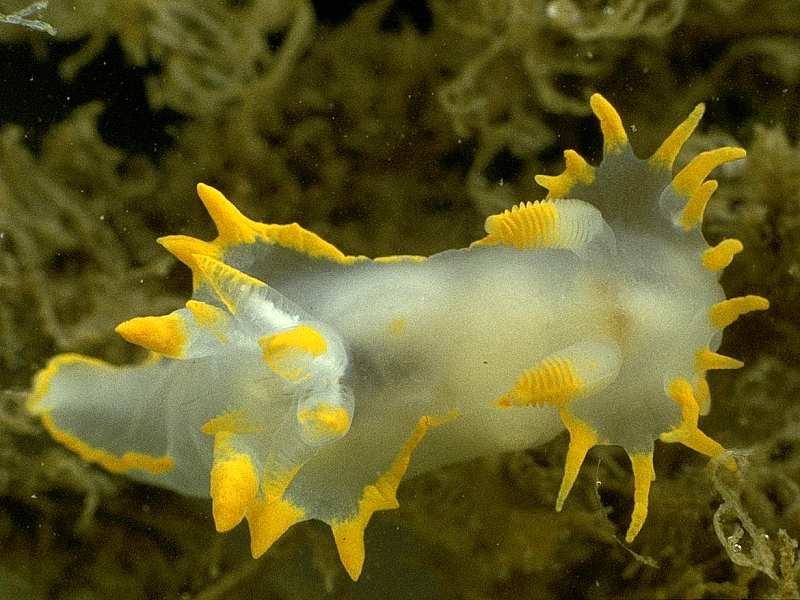| MOLLUSCA : Nudibranchia : Polyceridae | SNAILS, SLUGS, ETC. |
Polycera faeroensis Lemche, 1929
 |
| Polycera faeroensis |
Description: This nudibranch may grow to a length of 45mm, the ground colour is translucent white. Eight or more yellow tipped oral veil processes are present. There is a yellow tipped process at either side of the gills, which in larger individuals usually becomes flattened and develops several points. The tips of the rhinophores, propodial tentacles, oral lobes and gills are also pigmented with yellow. Occasionally rounded yellow spots are present on the body.
Habitat: It appears that P. faeroensis feeds on erect bryozoans such as Crisia and perhaps Bugula species. The spawn is a white coiled ribbon.
Distribution: A common species in the circalittoral and on steep rockfaces on the western and southern coasts of the British Isles. Originally described from the Faeroes.
Key Identification Features:
- Eight or more processes on the oral veil, two rhinophores without basal processes.
- White with yellow processes and usually without yellow spots on the body.
Distribution Map from NBN: Polycera faeroensis at National Biodiversity Network mapping facility, data for UK.
iNaturalist: Polycera faeroensis at iNaturalist World Species Observations database.
GBIF data for Polycera faeroensis
WoRMS: Polycera faeroensis at World Register of Marine Species. Accepted name: Polycera faeroensis Lemche, 1929. AphiaID: 140834.
Classification: Biota; Animalia; Mollusca; Gastropoda; Heterobranchia; Euthyneura; Ringipleura; Nudipleura; Nudibranchia; Doridina; Doridoidei; Polyceroidea; Polyceridae; Polycerinae; Polycera
| Previous species | Next species |
| Picton, B.E. & Morrow, C.C. (2024). Polycera faeroensis. Lemche, 1929. [In] Encyclopedia of Marine Life of Britain and Ireland. https://www2.habitas.org.uk/marbiop-ni/speciesaccounts.php?item=W13620. Accessed on 2025-04-10 |